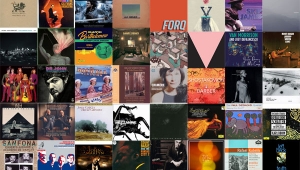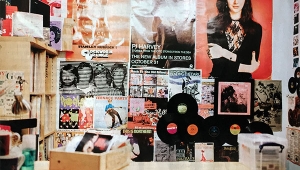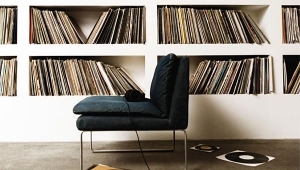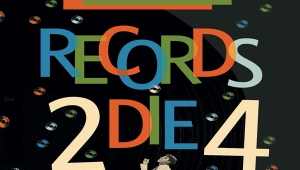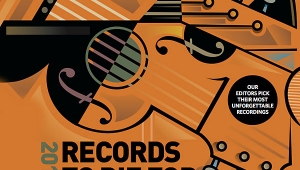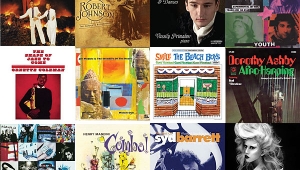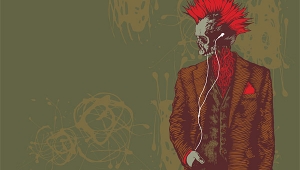| Columns Retired Columns & Blogs |
2011 Records To Die For Page 4
JON IVERSON
DAVID BOWIE: The Man Who Sold the World
Rykodisc RCD 10132 (CD). 1970/1990. Tony Visconti, prod.; Ken Scott, eng. AAD? TT: 54:01
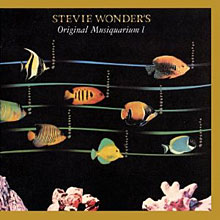 STEVIE WONDER: Original Musiquarium I
STEVIE WONDER: Original Musiquarium I
Tamla 6002TL2C (1974). Stevie Wonder, prod.; Gary Olazabal, eng. AAA. TT: 85:44
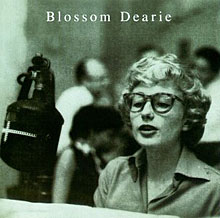 BLOSSOM DEARIE: Blossom Dearie
BLOSSOM DEARIE: Blossom Dearie
Blossom Dearie, vocals, piano; Bobby Jaspar, flute; Herb Ellis, Mundell Lowe, Kenny Burrell, guitar; Ray Brown, bass; Jo Jones, Ed Thigpen, drums; Russ Garcia's orchestra
Verve Jazz Masters 51 (CD). 1956–1960/1996. Norman Granz, prod.; Ben Young, restoration; Steve Fallone, mastering. AAD. TT: 53:39
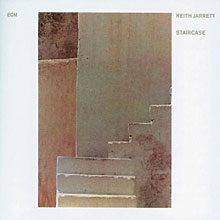 KEITH JARRETT: Staircase
KEITH JARRETT: Staircase
Keith Jarrett, piano
ECM 1090/91 (2 CDs). 1977. Manfred Eicher, prod.; Roger Roche, eng. AAD. TT: 74:33
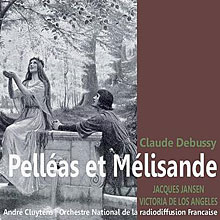 DEBUSSY: Pelléas et Mélisande
DEBUSSY: Pelléas et Mélisande
Victoria de los Angeles, Mélisande; Jacques Jansen, Pelléas; Gérard Souzay, Golaud; Pierre Froumenty, Arkel; Jeannine Collard, Genevieve; others; Orchestre National de la Radiodiffusion Franáaise, André Cluytens
Testament SBT3051 (3 CDs). 1958/1995. René Challon, prod.; Walter Ruhlmann, eng. ADD. TT: 2:41:13
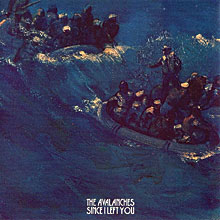 THE AVALANCHES: Since I Left You
THE AVALANCHES: Since I Left You
Modular 31177-2 (CD). 2000. Robbie Chater, Darren Seltmann, prods. DDD? TT: 60:46
DAVID BOWIE: The Man Who Sold the World
Rykodisc RCD 10132 (CD). 1970/1990. Tony Visconti, prod.; Ken Scott, eng. AAD? TT: 54:01
Something old: A lot has been said about the gnarled, bass-heavy sound of this, the first proper David Bowie album (his previous records being opportunistic collections of styles with no real center), which kick-started the glam era. But I love it. The project was assembled and recorded by producer and bassist Tony Visconti in Bowie's recently purchased gothic manor, and Visconti was not shy about shoving his bass guitar up next to Mick Ronson's buzzing, dreamy guitars. The sound quality and playing are a little coarse in spots, but it doesn't bother me at all, since the music and mix are so wondrous. I only wish Bowie could drop all pretense and perfection and do it again.
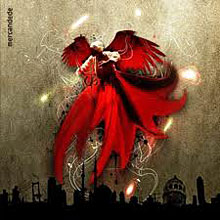 MERCAN DEDE: 800
MERCAN DEDE: 800
Doublemoon DM042 (CD). 2008. Mercan Dede, prod.; Serkan Alkan, eng. DDD? TT: 72:08
Something new: After 15 years of creating music, Turkish-born Mercan Dede has declared this his last album, and he's going out at his peak. Dede's instruments are primarily the ney, bendir, and "electronics," and here he's joined by acoustic musicians and singers from around the planet. Hypnotic and rich, the compositions blend ancient and modern while staying firmly rooted in the Middle East, though the dubby bass lines might give traditionalists a little pause. Recording quality is excellent, with a deep bottom end and an expansive soundstage, held back in spots by some digititis. Beautifully packaged, this disc also qualifies as my Cover 2 Die 4 of the last several years.
FRED KAPLAN
 STEVIE WONDER: Original Musiquarium I
STEVIE WONDER: Original Musiquarium ITamla 6002TL2C (1974). Stevie Wonder, prod.; Gary Olazabal, eng. AAA. TT: 85:44
BERG: Violin Concerto
STRAVINSKY: Violin Concerto
Itzhak Perlman, violin; Seiji Ozawa, Boston Symphony
Deutsche Grammophon 2531 110 (LP). 1980. Rainer Brock, prod.; Klaus Hiemann, Hans-Peter Schweigmann, engs. AAA. TT: 47:14
My house is on fire. Dazed and delusional, I think I've already saved all the records I've listed in past years' R2D4s, so I rescue these. Stevie Wonder's remastered greatest-hits twofer from 1982 is pure joy. Side 2 ("Superwoman," "Send One Your Love," "You Are the Sunshine of My Life," "Ribbon in the Sky") is dreamy; side 3 (the likes of "Sir Duke" and "Master Blaster") is a kick. A near-perfect pop compilation, and the original vinyl release sounds great, much better than the albums on which the songs first appeared. It's reference-quality pop.
Once I realize that I've left all my jazz in the blaze, I'll want to wallow in the Weltschmerz of Berg's Violin Concerto. Composed in 1935 to memorialize the death of the 18-year-old daughter of Alma Mahler-Werfel and Walter Gropius ("To the memory of an angel," Berg wrote in the dedication), it may be the most gorgeous piece of classical music written in the 20th century. Fusing 12-tone serialism with folk music and Bach-ian chorale, it's a rare work at once intellectually intricate and emotionally sublime. The musicians live up to the challenge, and DG's pre-digital sound is lush.
DAVID LANDER
 BLOSSOM DEARIE: Blossom Dearie
BLOSSOM DEARIE: Blossom DearieBlossom Dearie, vocals, piano; Bobby Jaspar, flute; Herb Ellis, Mundell Lowe, Kenny Burrell, guitar; Ray Brown, bass; Jo Jones, Ed Thigpen, drums; Russ Garcia's orchestra
Verve Jazz Masters 51 (CD). 1956–1960/1996. Norman Granz, prod.; Ben Young, restoration; Steve Fallone, mastering. AAD. TT: 53:39
Blossom Dearie, who died in February 2009 at the age of 82, sustained a half-century-long cabaret career with a distinctive, delicate voice that was enhanced by her pianism and musical taste. Raised about two hours north of Manhattan, she moved there in the 1940s, and in the '50s relocated to Paris, where the savvy jazz promoter Norman Granz heard her and signed her to a multi-album contract. The 16 selections on this compilation, all from their Verve LPs, make a fine introduction to a one-of-a-kind artist. My favorite is "Manhattan," the Rodgers & Hart standard, here redolent with yearning. Intentionally or not, Dearie's rendition lets us glimpse the real Larry Hart—"the American Toulouse-Lautrec," as one theatrical colleague called the troubled, alcoholic lyricist. When Dearie sings "We'll turn Manhattan into an isle of joy," her slow, ever-so-wistful interpretation turns a familiar romantic assertion into an unattainable dream.
OLIVIER MESSIAEN: Visions de l'Amen
Marilyn Nonken, piano I; Sarah Rothenberg, piano II
Bridge 9324 (CD). 2010. Judith Sherman, prod.; Andrew Bradley, eng. DDD. TT: 48:53
Olivier Messiaen, born in France in 1908, studied ancient Greek and Hindu rhythms, medieval plainchant, even birdsong, while devising a unique style that won him a place in the 20th century's modernist pantheon. His Visions de l'Amen, written for two pianos in 1943 and imbued with the composer's Catholic mysticism, is born in near silence, slowly crescendoes into being, and ultimately reaches a breathtaking extended conclusion that Messiaen characterized as "a carillon of light." Premiered in wartime Paris by the composer and Yvonne Loriod, a gifted pupil who became his wife, it was the only piece performed in that concert. It's also the sole selection on this fine-sounding CD, which features two authoritative interpreters of the modern repertoire, one of whom studied with Loriod. Given its jarring, emotion-sapping intensity, letting it stand alone makes sense. Replete with rhythmic intricacies and daring keyboard-register contrasts, these vividly colored Visions burst with power throughout.
RICHARD LEHNERT
 KEITH JARRETT: Staircase
KEITH JARRETT: StaircaseKeith Jarrett, piano
ECM 1090/91 (2 CDs). 1977. Manfred Eicher, prod.; Roger Roche, eng. AAD. TT: 74:33
Keith Jarrett released a half-dozen or so albums per year through the latter half of the 1970s, so perhaps it's not strange that this 11-faceted gem of mostly introspective lyricism was lost in the shuffle. It shouldn't have been. With the monumental Sun Bear Concerts, recorded less than a year before, these 11 tracks of studio improvisations comprise the other of Jarrett's many solo-piano releases that I most often turn to, and perhaps to none of its tracks more often than Hourglass, the second of Staircase's four suites. "Part 1" is a study in joy and surprise, all rhythmic wit and intervallic leaps; it has made me grin every one of the 100 or so times I've heard it. "Part 2" is a seemingly never-ending cadence of lingering farewell that does at last end, though I never want it to. But there's so much more here, it's not all lyrical—thorny patches abound, as do extremely still ones—and it looks forward to the shorter improvisations of which Jarrett now builds his solo-piano concerts. A wonder in flawless technique and sound.
ARVO PÄRT: Alina
Spiegel im Spiegel, Für Alina
Vladimir Spivakov, violin; Dietmar Schwalke, cello; Sergej Bezrodny, Alexander Malter, piano
ECM New Series 1591 (CD). 1999. Manfred Eicher, prod.; Markus Heiland, eng. DDD. TT: 51:24
If by minimalism in music one means the most feeling and meaning wrung from the fewest notes, then Reich, Glass, Adams, and Riley do not come close to qualifying. Arvo Pärt does, and never so poignantly as in Alina, in which spareness and austerity approach disappearance. Spiegel im Spiegel (Mirror in Mirror) appears here in three duo arrangements: two for violin and piano, one for cello and piano. Für Alina is performed twice, both times on solo piano. Each repetition of composition itself comprises repetitions of the simplest, sparest themes and rhythmic patterns, exquisitely extended and suspended, performed with a delicacy and nuance that seem superhuman or otherworldly or downright alien. Each time a composition, or a repeated passage within a composition, comes round again, it seems that this, at last, is the iteration most true. One comes away from Alina with a heart as comforted as it is troubled: I didn't know a human endeavor could be so subtle. I don't know why we can't treat each other with as much tenderness. Which is why we make art. Here is some of the best of it. (XXIV-2)
ROBERT LEVINE
 DEBUSSY: Pelléas et Mélisande
DEBUSSY: Pelléas et MélisandeVictoria de los Angeles, Mélisande; Jacques Jansen, Pelléas; Gérard Souzay, Golaud; Pierre Froumenty, Arkel; Jeannine Collard, Genevieve; others; Orchestre National de la Radiodiffusion Franáaise, André Cluytens
Testament SBT3051 (3 CDs). 1958/1995. René Challon, prod.; Walter Ruhlmann, eng. ADD. TT: 2:41:13
If this opera were any stranger, it would be behind bars. No arias or ensembles, only about 15 minutes of music marked forte or above; lengthy conversations held at an intimate whisper, and a heroine who may be constantly lying or completely out of her mind. But the listener, once smitten, is soon haunted by this work, and though a dozen decent recordings of it are available, this is the one that sticks in the mind. In fine mono sound—in its original release the orchestra was too far back, and while it still takes somewhat of a back seat to the singers, it has been remastered—it captures the opera's wispiness and puzzling moral center like no other. Gérard Souzay's Golaud, such a mellow gent at the start, is driven utterly mad by his strange bride. This is Souzay's only opera recording—he was one of the greatest Lieder singers ever. And she, Mélisande, in the person of Victoria de los Angeles, sings with a cool tone that she imbues with a visceral tremble when needed. The Pelléas, Jacques Jansen, sounds properly innocent and infatuated with the little woman found in the forest. Cluytens leads as if the whole opera were an hallucination, which it might just be.
MOZART: La Clemenza di Tito
Mark Padmore, Tito; Alexandra Pendatchanska, Vitellia; Sunhae Im, Servilia; Bernarda Fink, Sesto; Marie-Claude Chappuis, Annio; Sergio Foresti, Publio; RIAS Kammerchor, Freiburger Barockorchester; René Jacobs
Harmonia Mundi 801923.24 (2 CDs). 2006. Dr. Richard Lorber, prod.; René Möller, eng. DDD. TT: 2:15:00
If you had asked me 20 years ago whether or not a recording of this opera would be indispensable to anyone's collection, I might have replied in the negative. Granted, it contains some of Mozart's most wonderful writing for instruments and voices, but the opera seria plot and format always seemed archaic, a fine late-Mozart curiosity. Then along came this recording, and suddenly the opera was a dramatic entity, a story of love and forgiveness, with noble aims. The characters of Sesto and Vitellia are filled with passion, friendship, jealousy, hatred, and near-insanity; their arias are complex, and invariably accompanied by obbligato instruments that weave and comment and keep the textures fascinating. The other characters' music is merely gorgeous. Jacobs and his orchestra and singers are thoroughly involved, and perform with an edge that takes the work out of the museum. It makes Tito a viable theater work, alive and vibrant. (XXIX-8, XXX-2)
ERICK LICHTE
 THE AVALANCHES: Since I Left You
THE AVALANCHES: Since I Left YouModular 31177-2 (CD). 2000. Robbie Chater, Darren Seltmann, prods. DDD? TT: 60:46
Vacation: sunshine, sand, beautiful girls, clear crashing waves, dancing, laughter, fun. For a sonic summation of summer, the Avalanches' Since I Left You gets my vote. Created almost exclusively from samples, the album's kaleidoscopic soundscapes, textures, and beats come together to create real compositions that miraculously hold together. Though made from other people's records, Since I Left You refuses to make overt references to other styles, songs, or to any other album ever recorded. While being one of the most innovative recordings ever made, the album's ability to project the feeling and fun of an endless summer party makes me come back to it again and again.
BLACK SABBATH: Paranoid
Warner Bros. 3104-2 (CD). 1971. Rodger Bain, prod. AAD. TT: 42:13
Yeah, that's right, I'm talkin' about "War Pigs," "Paranoid," "Iron Man," "Fairies Wear Boots," monster riffs, and tasty licks. Paranoid is the sound of the whole genre of heavy-metal music escaping the confines of its witch-mother's womb, sliding down her razor-studded birth canal, chewing off its own umbilical cord, then scurrying into the night to wreak vengeance on the hypocrites of the world. Not only did Paranoid invent heavy metal, it contains the sounds of a band that breathed and moved together. Tony Iommi, Bill Ward, and Geezer Butler play with reckless abandon and intuitive feel for one another. This record should serve as a template of how mastering should be done and how a rock album should sound.
- Log in or register to post comments





